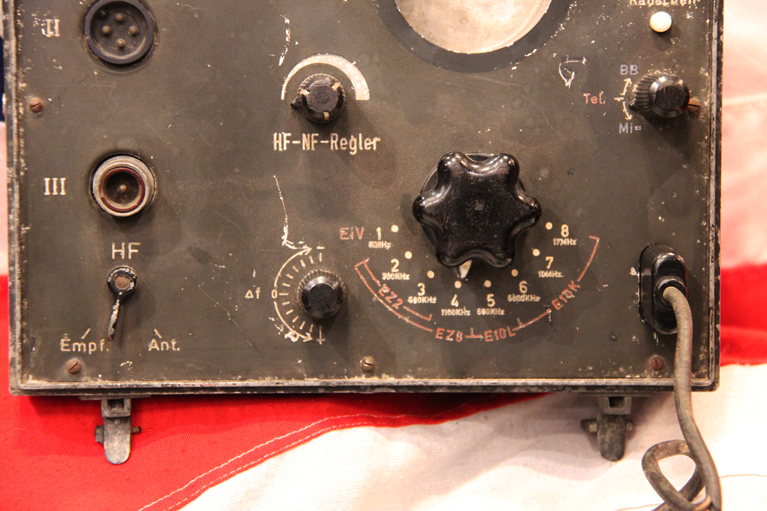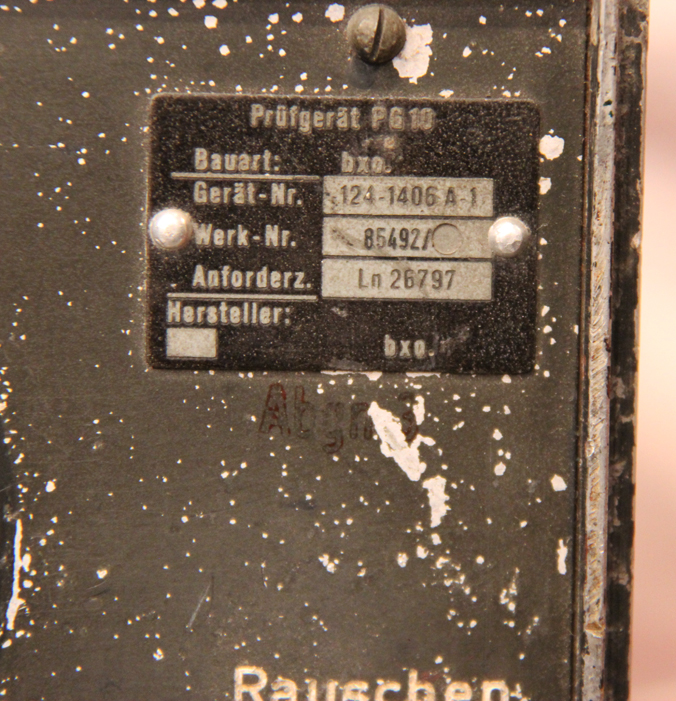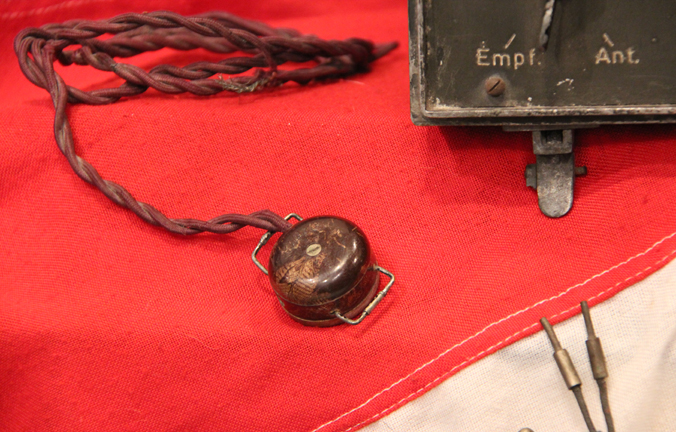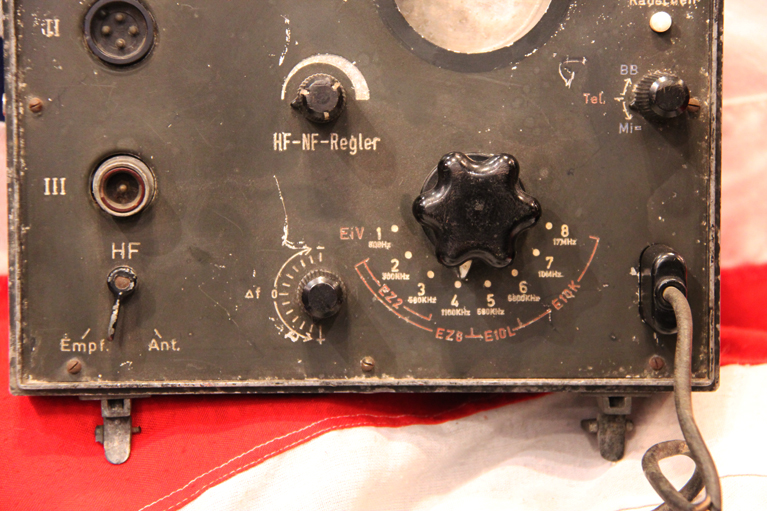A Super WW2 Luftwaffe Bomber Radio, Morse Tapper and Earphones. Deutche Telefonwerk und Kabelindustrie ag Berlin Likely From A Heinkel He 111
A most rare Luftwaffe bomber radio element prufgerat PG10, with earphones, throat-mike and morse tapper. All original Luftwaffe issue and possibly removed from a crashed bomber. Serial number plate shows it was manufactured by Deutche Telefonwerk und Kabelindustrie ag Berlin, WW2 German code number 'bxo'. According to its 24 page manual it was issued with a splash-proof case, one might assume in case the plane crashed at sea and the radio was salvageable.
As may be used in the Heinkel He 111, and it probably was removed from such an aircraft. It was a German aircraft designed by Siegfried and Walter G?nter at Heinkel Flugzeugwerke in 1934. Through development it was described as a "wolf in sheep's clothing". Due to restrictions placed on Germany after the First World War prohibiting bombers, it masqueraded as a civil airliner, although from conception the design was intended to provide the nascent Luftwaffe with a fast medium bomber.
Perhaps the best-recognised German bomber due to the distinctive, extensively glazed "greenhouse" nose of later versions, the Heinkel He 111 was the most numerous Luftwaffe bomber during the early stages of World War II. The bomber fared well until the Battle of Britain, when its weak defensive armament was exposed. Nevertheless, it proved capable of sustaining heavy damage and remaining airborne. As the war progressed, the He 111 was used in a variety of roles on every front in the European theatre. It was used as a strategic bomber during the Battle of Britain, a torpedo bomber in the Atlantic and Arctic, and a medium bomber and a transport aircraft on the Western, Eastern, Mediterranean, Middle Eastern, and North African Front theatres. Top right guage lacking.
Code: 21642
995.00 GBP








